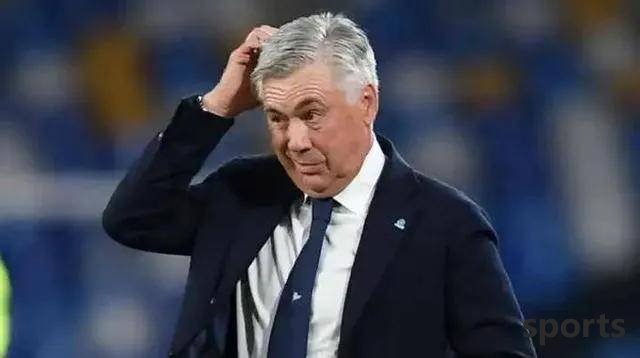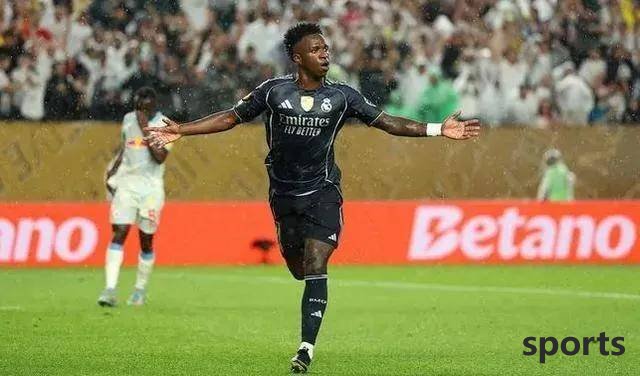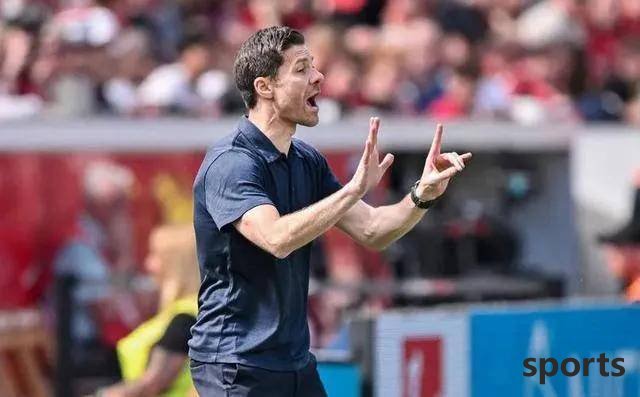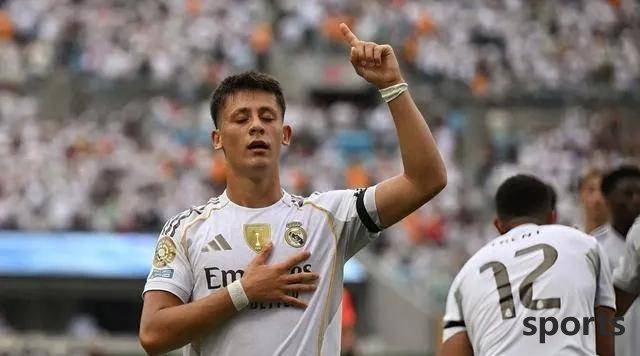Alonso vs. Ancelotti: Real Madrid s triple transformation and tactical innovation after changing coach
3:53pm, 1 July 2025Football
Real Madrid's "change of coaches is like changing swords": In the Alonso era, the youth storm of the Galaxy battleships

Real Madrid in the Ancelotti era, although they achieved a brilliant four consecutive championships in the Champions League, they always bear the criticism of "over-reliance on veterans and rejecting the new generation." Potential rookies such as 21-year-old central defender Guerrel and 18-year-old forward Enderick often can only make a symbolic appearance in stoppage time of the game, and even sit on the bench for a long time. This "big brand-first" employment strategy has made the team more bloated after joining Mbappe, and the competition on the front line is fierce, while the midfield and backcourt lacks fresh blood supplements. Data shows that in the later stages of Ancelotti coaching, the average playing time of U23 players is even less than 20 minutes. This conservative style of employing people eventually became a shackle for the team's renewal.

However, Alonso's arrival completely broke this deadlock. In the three games of the Club World Cup, he showed a completely different coaching style from Ancelotti, boldly activates young players, and activates the team's vitality. In the first match against Riyadh Crescent, 21-year-old Brazilian young player Garcia started as the right winger and contributed one pass and one shot, completely breaking the outside world's doubts about his ability. Mbappe was absent due to injury, and Vinicius and Rodrigo took turns to fill the team's strong competitiveness in the forward line and their flexibility and change in tactics. In the second game against Pachuca, the 19-year-old Heisen was pushed into the midfield. His precise interception and active running became the key to the team's reversal. The data comparison is even more eye-catching: the three Club World Cup coached by Alonso, the total playing time of U23 players accounted for more than 35%, while Garcia and Heysen directly created 4 goals. Spanish Le Marca commented: "Alonso's Real Madrid finally gave the youth training camp hope." At the tactical level, Alonso's reform hits the key point. He abandoned Ancelotti's conservative play style that relies on Modric's personal ability to dispatch, as well as the tactical model of "defensive counterattack, star singles". In the Ancelotti era, Real Madrid's midfielders often lost control due to the decline in coverage due to the increase in Modric's age. Faced with high-intensity confrontations such as Barcelona, teams often fall into the dilemma of "the midfield is out of control and the front line is isolated". For example, in the national derby, Real Madrid's ball possession rate was only 38%. Alonso introduced Leverkusen's high-pressure pressing system, requiring frontcourt players, especially Vinicius and Bellingham, to immediately counterattack the ball when they concede the ball, and Heysen is responsible for strangling the opponent's throwing point in the midfield. This high-pressure strategy has caused the opponent's ball possession success rate to plummet, with Riyadh's new moon being only 15%, and Pachuca is as low as 19%. At the same time, Alonso also added a sense of layering of midfield passes, requiring Valverde to retrace more, form a "midfield triangle" to advance, and expand the offensive line from "flying both wings" to "infiltration of the middle and breakthroughs in the ribs", which is fully reflected in the 3-0 victory against Salzburg Red Bull.
In addition, Alonso's on-site command also showed a completely different "iron-blooded" style from Ancelotti. Ancelotti's "good guy" style sometimes becomes a weakness in on-site command. For example, when he was against Manchester City in the Champions League semi-finals, he did not replace Rodrigo until the injury time, missing a good opportunity to counterattack. Alonso made extremely efficient decisions at critical moments. In the first game of Riyadh Crescent in the Club World Cup, after Asensio was sent off by a red card, he quickly changed the team 4-4-1, and Vinicius retreated to the midfield to stabilize the situation. In the game against Pachuca, when the team was behind, he decisively replaced Kros, replaced Kovacic, and finally reversed and won. Data shows that during Ancelotti's coaching period, the average time for key substitutions was 8.2 minutes, while Alonso's three Club World Cup games were all major adjustments in 10 minutes, and the success rate was as high as 100%. Bellingham said in an interview: "Alonso's tactical board does not have the word "big card" and he requires everyone to fight to the last minute."

Alonso's start was amazing, the challenges still exist: the test of the league and the Champions League, the coexistence of Mbappe and Vinicius, and the rotation of veterans, etc. Ancelotti's label as the "stability master" and his control in the locker room and rich experience in the Champions League are all his advantages. As Real Madrid legend Carlos said: "Real Madrid needs coaches at different stages, Ancelotti brings glory, but the new era needs new blood."

From 1-1 to 3-0 in the Club World Cup, Alonso announced to the world in three games: Real Madrid's revival not only requires superstars, but also the chemical reaction of "iron-blooded tactics, youth vitality, and decisive decision-making". His coaching philosophy may not be as romantic as Ancelotti, but it injected a long-lost fighting will into the team. In the future, the La Liga national derby and the Champions League knockout round will be the real touchstone for Alonso and his Real Madrid. This "change of coaches is like changing swords" has just begun.

Related Posts
- French national team wishes Mandanda: 6th place in history, 1 World Cup championship, thank you very much
- Substitute creates 2 goals! Brazilian striker Enrique: Ancelotti s appreciation of me means a lot
- Thames: Tottenham and Frank reach an agreement on personal terms, Bees ask the former to pay 10 million pounds
- The top 8 of the Club World Cup: The top 16 matches are clear, the European team is ready to take off, and may occupy 7 seats
- Manchester United intends to sign Paris Saint-Germain forward Goncarlo Ramos this summer
- It s so worth it! The Blues Club World Cup rewards over 100 million yuan, and "reimbursement" the summer window to purchase attack line duo
- Manchester United has confirmed that three players will leave the team, and the new Luke Shaw will renew his contract! Anthony says Betis is the best decision
- Manchester United s poor performance boss Ratcliff s net worth shrinks, and the richest man in the UK turns into seventh
- Yu Genwei talks about 1-4 seaport: Without surrender as the outside world imagines, Tianjin football is never possible
